Hi
I have a huge transformer 9KG from a 2800w RMS professional rack amp .
the output was 4 x 42v-0-42v
and 1 x 21v-0-21v
the secondary windings in three layers the 21v-0-21v on top
then two of the 42v-0-42v in the middle which I have removed 0.7 Kgs of copper to leave just 2 x 42v-0-42v windings .
I then worked out the turn to volt ratio and removed the required wire to wind both down to 2 x 35v-0-35v.
voltages look good see pic .
what I would like to know if removing the windings will have an effect on the VA rating or not ?
and do I need to work out the phase on the output windings ?
if so how do I do that ?
thanks Glenn
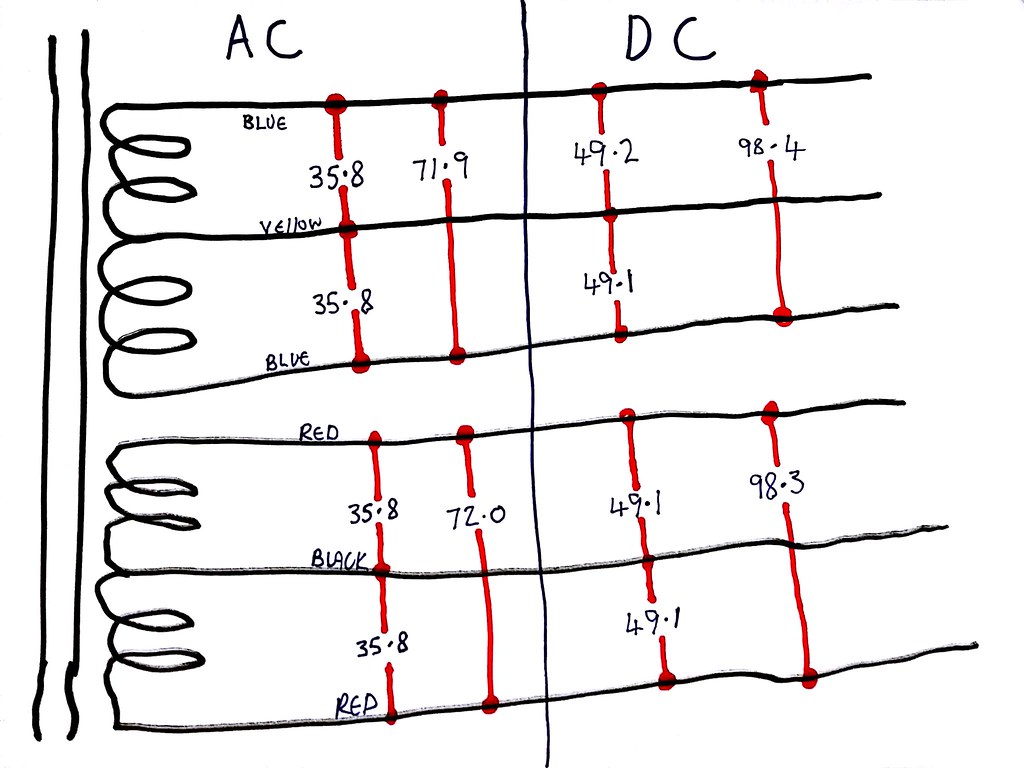 New Doc 2018-10-19 15.23.57 by glenn jarrett, on Flickr
New Doc 2018-10-19 15.23.57 by glenn jarrett, on Flickr
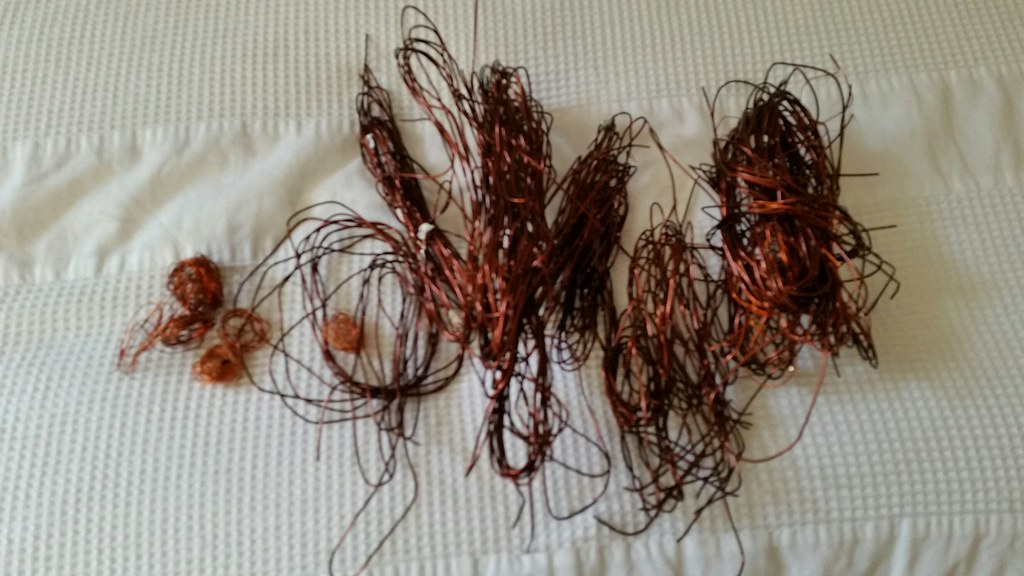 20181019_130417_resized by glenn jarrett, on Flickr
20181019_130417_resized by glenn jarrett, on Flickr
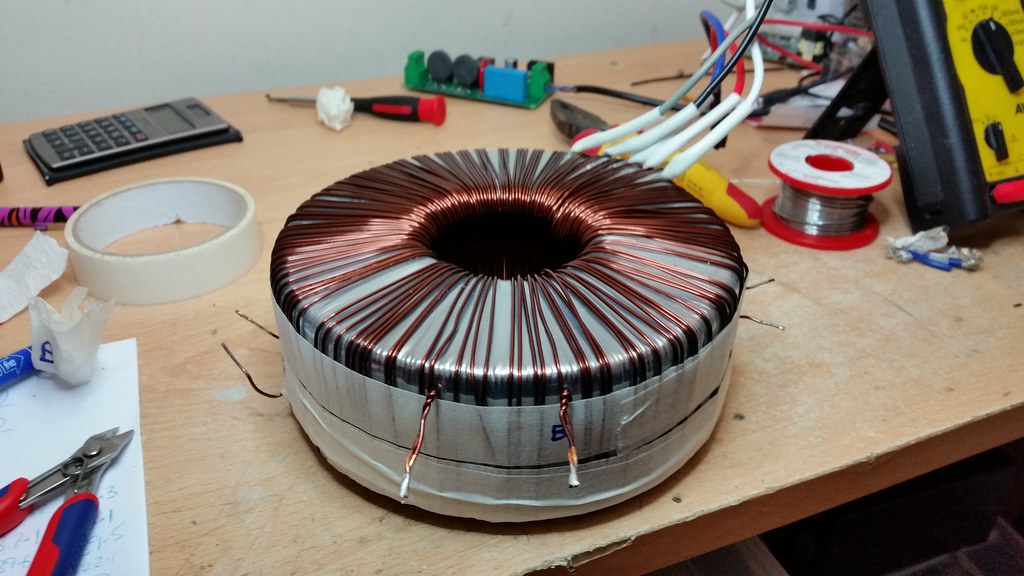 20181019_130236 by glenn jarrett, on Flickr
20181019_130236 by glenn jarrett, on Flickr
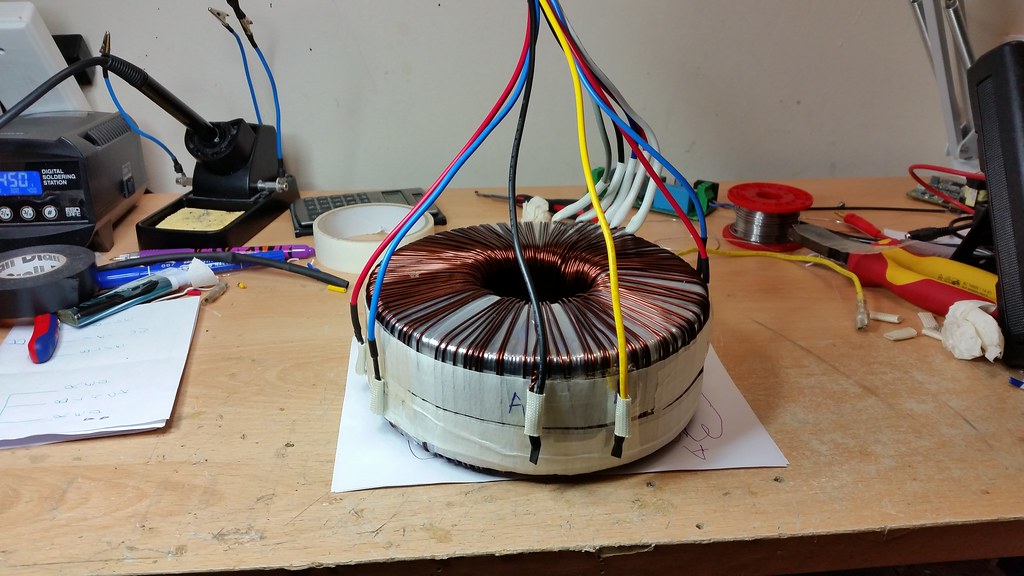 20181019_133624 by glenn jarrett, on Flickr
20181019_133624 by glenn jarrett, on Flickr
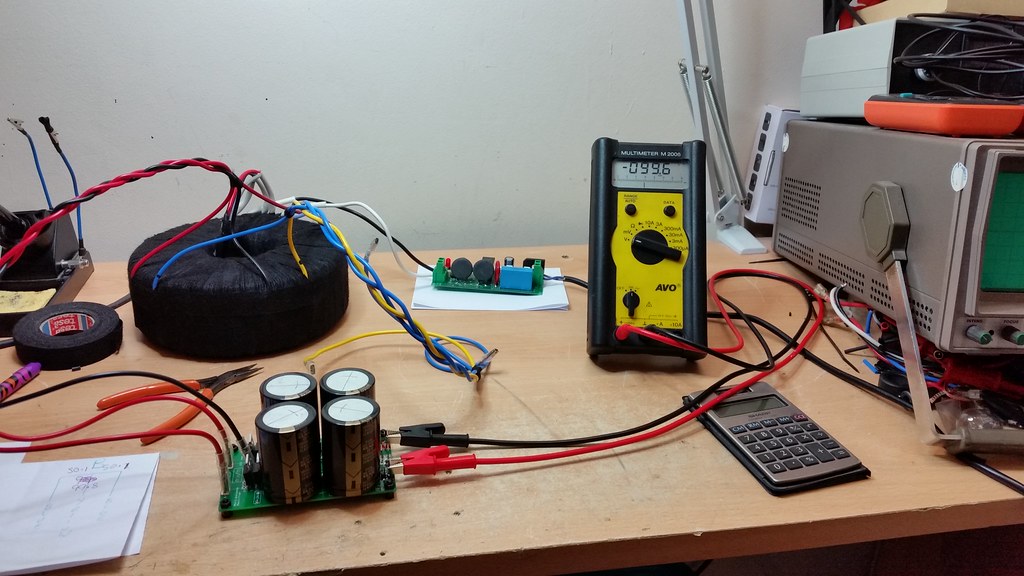 20181019_144532 by glenn jarrett, on Flickr
20181019_144532 by glenn jarrett, on Flickr
I have a huge transformer 9KG from a 2800w RMS professional rack amp .
the output was 4 x 42v-0-42v
and 1 x 21v-0-21v
the secondary windings in three layers the 21v-0-21v on top
then two of the 42v-0-42v in the middle which I have removed 0.7 Kgs of copper to leave just 2 x 42v-0-42v windings .
I then worked out the turn to volt ratio and removed the required wire to wind both down to 2 x 35v-0-35v.
voltages look good see pic .
what I would like to know if removing the windings will have an effect on the VA rating or not ?
and do I need to work out the phase on the output windings ?
if so how do I do that ?
thanks Glenn
 New Doc 2018-10-19 15.23.57 by glenn jarrett, on Flickr
New Doc 2018-10-19 15.23.57 by glenn jarrett, on Flickr 20181019_130417_resized by glenn jarrett, on Flickr
20181019_130417_resized by glenn jarrett, on Flickr 20181019_130236 by glenn jarrett, on Flickr
20181019_130236 by glenn jarrett, on Flickr 20181019_133624 by glenn jarrett, on Flickr
20181019_133624 by glenn jarrett, on Flickr 20181019_144532 by glenn jarrett, on Flickr
20181019_144532 by glenn jarrett, on FlickrIt will have an effect on the V/A rating as the copper weight between the primary and secondary are now unbalanced.
It should be OK. The V/A rating will be reduced as the voltage output overall is less meaning the current is still available but at a reduced voltage. P or V/A = V x I.
You can work out phases with a sig gen and a scope.
Apply sig gen to primary and monitor outputs on two scope channels.
Apply sig gen to primary and monitor outputs on two scope channels.
Also this is the original sticker of the transformer the grey wire on the primary shows what looks like a fuse or is it a PTC connected to the black wire ?
currently running with red & blue connected together and 230v across white and black through a 18A soft start .
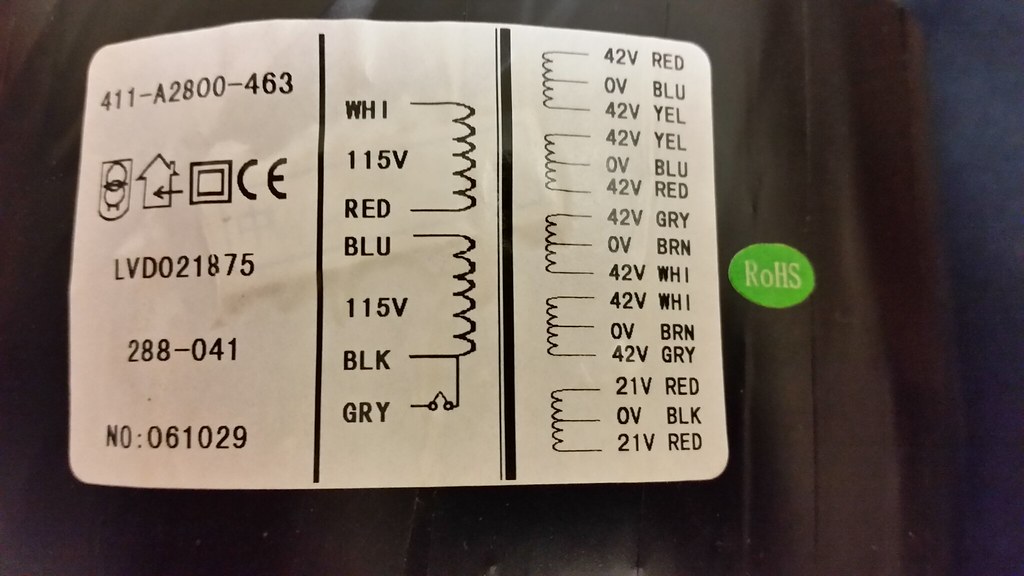 20181019_165715 by glenn jarrett, on Flickr
20181019_165715 by glenn jarrett, on Flickr
currently running with red & blue connected together and 230v across white and black through a 18A soft start .
 20181019_165715 by glenn jarrett, on Flickr
20181019_165715 by glenn jarrett, on FlickrLooks like you had to unwind multiple secondaries to get to them all, and then rewind. I would be leery of re-using magnet wire in a trafo - it is too easy to scrape insulation off and it always gets kinked up even if you use a winding shuttle. I would have put on completely new secondaries and saved the old wire for winding speaker crossover inductors. Then you could upsize the wire (or paralleled multiples) to keep the original VA capacity. If you only need to drop a few volts and are ok with the lower VA capacity it is far easier and safer to add extra primary turns (evenly, over the outside) using #12 or #14 THHN building wire. Insulation is plenty heavy not to have shorting or hi-pot concerns, yet you can still get one or two dozen turns on the core without tearing anything apart.
To maintain the same VA on less volts, you must increase the secondary wire thickness.
If you removed two windings, you must account for them too... Their VA rating should be added to the thickness of wire of remaining secondarys as well.
If you removed two windings, you must account for them too... Their VA rating should be added to the thickness of wire of remaining secondarys as well.
It's been said already in various guises. The original VA rating specified that each winding could deliver a certain current. You will not change this available current by simply removing turns from the secondaries.
If you remove secondaries you can then increase the available current by rewinding fewer turns of thicker wire as new secondaries, only up to the original VA rating of course.
You can certainly add turns or remove them to alter the voltage.
If you remove secondaries you can then increase the available current by rewinding fewer turns of thicker wire as new secondaries, only up to the original VA rating of course.
You can certainly add turns or remove them to alter the voltage.
Last edited:
- Status
- Not open for further replies.
- Home
- Amplifiers
- Power Supplies
- Winding back a Transformer for less volts